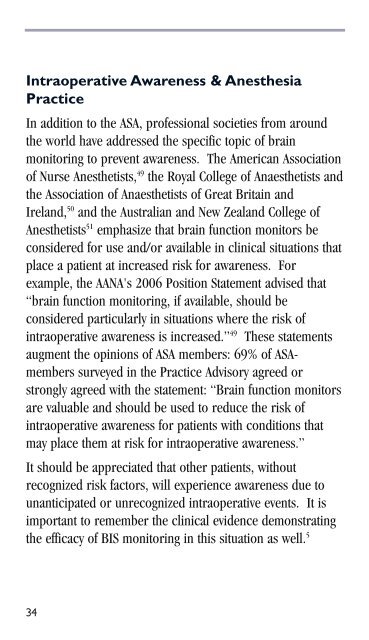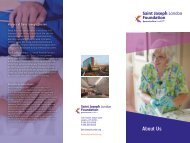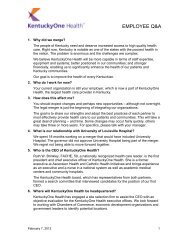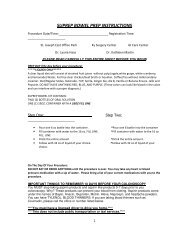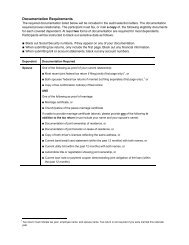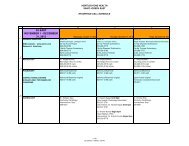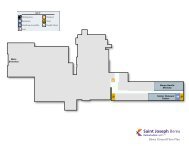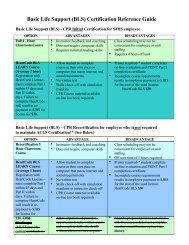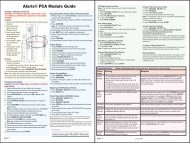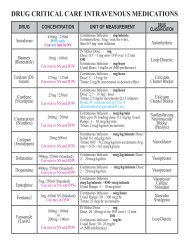BIS guide for clinicians
BIS guide for clinicians
BIS guide for clinicians
Create successful ePaper yourself
Turn your PDF publications into a flip-book with our unique Google optimized e-Paper software.
Intraoperative Awareness & Anesthesia<br />
Practice<br />
In addition to the ASA, professional societies from around<br />
the world have addressed the specific topic of brain<br />
monitoring to prevent awareness. The American Association<br />
of Nurse Anesthetists, 49 the Royal College of Anaesthetists and<br />
the Association of Anaesthetists of Great Britain and<br />
Ireland, 50 and the Australian and New Zealand College of<br />
Anesthetists 51 emphasize that brain function monitors be<br />
considered <strong>for</strong> use and/or available in clinical situations that<br />
place a patient at increased risk <strong>for</strong> awareness. For<br />
example, the AANA's 2006 Position Statement advised that<br />
“brain function monitoring, if available, should be<br />
considered particularly in situations where the risk of<br />
intraoperative awareness is increased.” 49 These statements<br />
augment the opinions of ASA members: 69% of ASAmembers<br />
surveyed in the Practice Advisory agreed or<br />
strongly agreed with the statement: “Brain function monitors<br />
are valuable and should be used to reduce the risk of<br />
intraoperative awareness <strong>for</strong> patients with conditions that<br />
may place them at risk <strong>for</strong> intraoperative awareness.”<br />
It should be appreciated that other patients, without<br />
recognized risk factors, will experience awareness due to<br />
unanticipated or unrecognized intraoperative events. It is<br />
important to remember the clinical evidence demonstrating<br />
the efficacy of <strong>BIS</strong> monitoring in this situation as well. 5<br />
34


